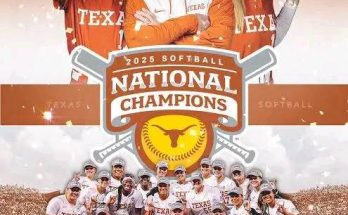The Green Bay Packers and New York Jets found themselves at the center of an unexpected scheduling change due to a conflict with a local broadcast partner. Such adjustments, while not entirely uncommon in the NFL, often create a ripple effect impacting teams, fans, and media coverage. The league’s intricate scheduling process involves balancing numerous factors, including stadium availability, travel logistics, and television contracts. When conflicts arise, particularly with local broadcasters who hold significant sway in regional markets, the NFL must act swiftly to find a resolution that satisfies all parties involved.
In this instance, the Packers-Jets game was originally slated for a specific time slot that aligned with the broader NFL schedule. However, the local broadcaster, which may have had prior commitments such as college football games, regional sports programming, or other contractual obligations, necessitated a shift. The NFL, despite its immense influence, must occasionally yield to these partnerships, as local broadcasters play a crucial role in delivering games to regional audiences. These networks often have long-standing agreements with teams, ensuring that fans who may not have access to national broadcasts can still follow their favorite squads.
For the teams involved, a scheduling change can disrupt carefully planned routines. NFL franchises operate on tight weekly schedules, with practices, film sessions, and travel arrangements all meticulously coordinated. A shift in game time—whether moving to an earlier slot, a later kickoff, or even a different day—can alter a team’s preparation. Coaches must adjust their practice schedules, players may need to modify their recovery and mental preparation routines, and travel logistics could require last-minute changes. While professional athletes are accustomed to adapting, even minor disruptions can have an impact, particularly in a league where margins between victory and defeat are razor-thin.
Fans, too, feel the effects of such changes. Those who had made travel plans, arranged watch parties, or set aside time in their personal schedules must now rearrange their commitments. For Packers and Jets supporters, this could mean altering flights, canceling hotel reservations, or simply finding a new way to watch the game if the new time conflicts with other obligations. The NFL’s popularity ensures that millions of viewers plan their weekends around game times, and while die-hard fans will always find a way to tune in, last-minute adjustments can be frustrating.
From a media perspective, rescheduling a game requires networks to shuffle their programming lineup. National broadcasts may need to accommodate the change, particularly if the game is of high interest—such as a marquee matchup or one featuring star players like Aaron Rodgers, whose move from Green Bay to New York added extra intrigue to this contest. Broadcast partners must also consider advertising revenue, as slots for high-profile games command premium rates. A shift in timing could mean renegotiating ad placements or even offering make-goods to sponsors who purchased airtime under the original schedule.
The NFL’s ability to navigate these conflicts speaks to the league’s organizational prowess. Scheduling 272 regular-season games across 18 weeks is a monumental task, and the fact that major changes are relatively rare is a testament to the league’s planning. However, when adjustments are necessary, the NFL’s priority is to minimize disruption while maintaining fairness for all teams involved. In some cases, games are moved to different time slots on the same day; in others, they may be shifted to entirely different days, such as Monday or Thursday nights. Flexibility is key, and the league’s partnerships with networks, both national and local, ensure that games remain accessible to the widest possible audience.
For the Packers and Jets, this particular scheduling change may have been a minor footnote in their seasons, but it underscores the complex interplay between sports, media, and fan engagement. The NFL is not just a league of athletic competition; it is a sprawling entertainment enterprise where television rights, advertising dollars, and viewer satisfaction all play critical roles. As the media landscape continues to evolve—with streaming platforms gaining prominence and traditional broadcast models adapting—the league will likely face even more scheduling challenges in the future. Yet, if history is any indication, the NFL will continue to find solutions that keep the games on the field while satisfying the demands of its many stakeholders.
In the end, while fans may grumble about altered plans and players may need to adjust their routines, the show goes on. The Packers and Jets still took the field, the broadcasters still delivered the action to viewers, and the NFL once again demonstrated its ability to balance competing interests in the pursuit of delivering America’s most popular sport. Scheduling conflicts may be inevitable, but the league’s ability to manage them ensures that the game remains the undisputed king of the sports world.



